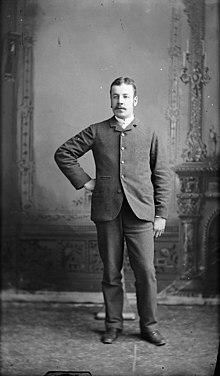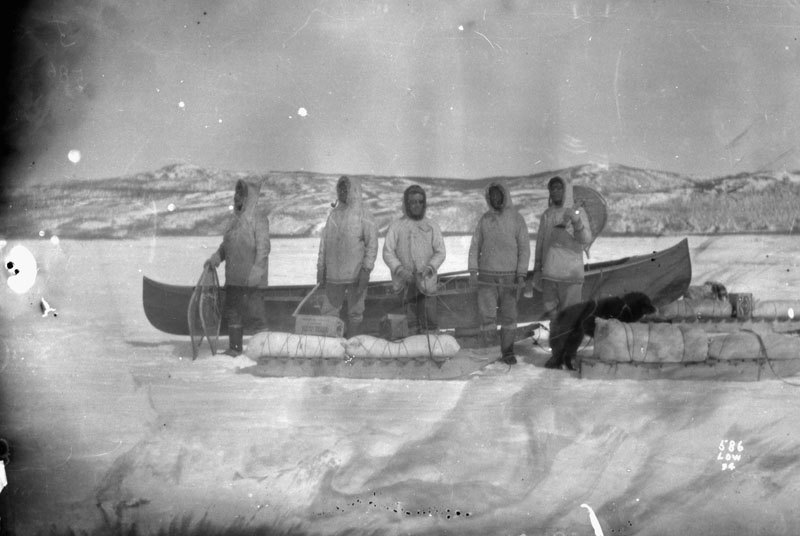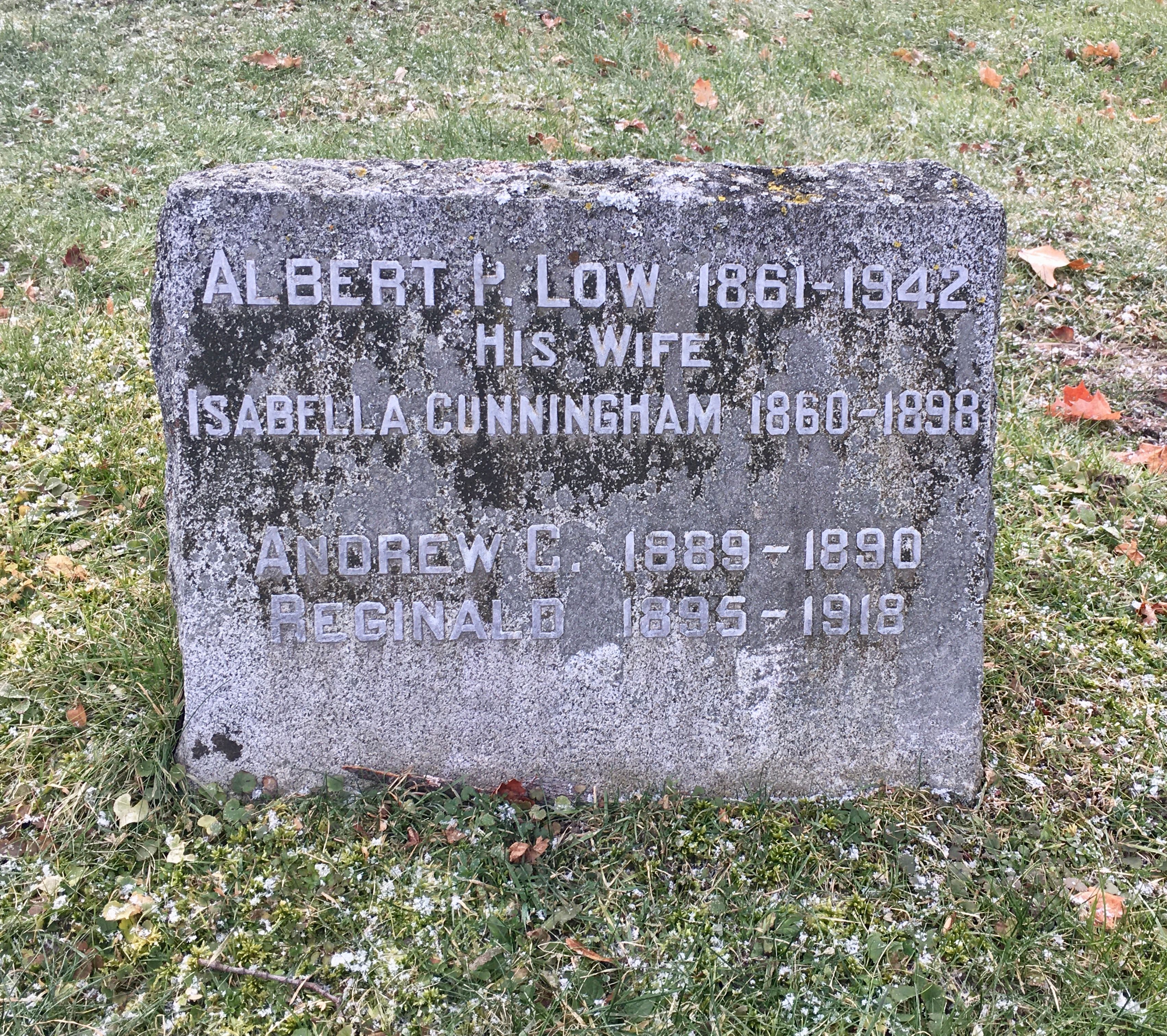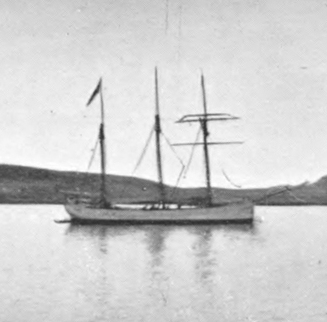
Explorer, Surveyor and Legend - Albert Peter Low
Albert Peter Low
Section 48, Lot 14 NW
Albert Peter Low, born in Montreal on May 24, 1861 and educated at McGill University, led a life that legends are made of. The majority of his career was spent as a geologist working for the Geological Survey of Canada (GSC), during which time he explored and mapped more than 12,000 km of harsh terrain in Labrador and northern Quebec in the late 1800s.
Before he made his mark as an explorer and surveyor, Low was an exemplary athlete. He played for two famous ice hockey teams, the McGill Hockey Club, considered the first organized hockey club in the world, and the Ottawa Hockey Club. In 1883, he played goaltender for the victorious McGill Hockey Club at the Montreal Winter Carnival tournament, and in 1884 his efforts as goaltender led to a shutout win for the Ottawa Hockey Club against McGill. He also appears in the earliest known photograph of a hockey team, which was of the McGill University Club of 1881.
As a young intern for the GSC, Low and his crew covered more than 8,000 km of wilderness, including nearly 5,000 by canoe and 1,500 on foot. One of the first recorded instances of his strength of character happened in 1884, in the dead of winter on the shores of Lake Mistassini in northern Quebec. Low and a provincial official had become embroiled in a heated dispute over who was leading the survey expedition.
Fed up, on February 2nd Low set out, travelling by foot and by dog sled through almost 500 km of empty, frozen terrain to reach Quebec City. There he caught a train to Ottawa, arriving on at the capital on March 2nd. He was back at the Lake Mistassini camp by the end of April, with a letter granting him full authority for the expedition. He was only 23 years old.

Low explored much of northern Quebec, and was responsible for the mapping of Quebec's Grande River, which later became part of the James Bay hydroelectric project in the 1970s. He was also tasked with the difficult and important job of studying the Labrador Peninsula in 1894 and 1895. The vast area was discovered to contain huge iron ore deposits, leading to the later development of mines in the area. Low’s work helped to define the Quebec-Labrador border. Subsequently, in 1897, he participated in a government expedition to Hudson Bay, and was in charge of exploring the Labrador side of Hudson Strait between Baffin Island and the continent.
In 1901, Low retired from the public service and for a few years made a brief foray into private business, mining for iron on Hudson Bay. But it wasn’t long before he was offered the chance to lead a 15-month government expedition to Hudson Bay and the Eastern Arctic Islands in 1903 and 1904.
Low, still an explorer to the core, accepted. The expedition was scientific, but it was also the first clear show of the Canadian government’s authority through the newly-acquired northern lands. The party travelled on the Neptune, a Newfoundland sealing ship repurposed for their voyage. The expedition included scientific staff, members of the Royal North West Mounted Police and Geraldine Moodie (1854-1945), professional photographer, grand-daughter of the author Susanna Moodie (Roughing in the Bush, Ottawa, 1852) and wife of one of the RNWMP's officers.
After surveying the west coast of Hudson Bay, the expedition sailed the Ellesmere Island in the summer of 1904 and took formal possession of it for Canada. The flag was also raised on Beechey and Somerset islands before the Neptune returned to Halifax, having covered a distance of 3,200 km.
DGS Neptune was a Dominion Government Ship dispatched on an expedition to Canada's Arctic Archipelago, in 1903–1904. Prior to the expedition, Neptune was employed as a sealing vessel off Newfoundland and Labrador.
Low's numerous reports, sketches and maps are still considered today as models of clarity, detail and accuracy. And his hundreds of expedition photographs of the geography and people he encountered are an invaluable record of northern Canada history. In 1906, Low published The Cruise of the Neptune, a treasure house of information and photographs of the Arctic peoples and the new scientific knowledge the crew gathered about the area's geography, weather, plants and animals.
In 1905, he was elected a fellow of the Geological Society of America. In 1906, Low was appointed Director of the GSC and then Deputy Minister of the Department of Mines in 1907
A severe illness forced him into retirement from the civil service in 1913. Low passed away on October 9, 1942.



